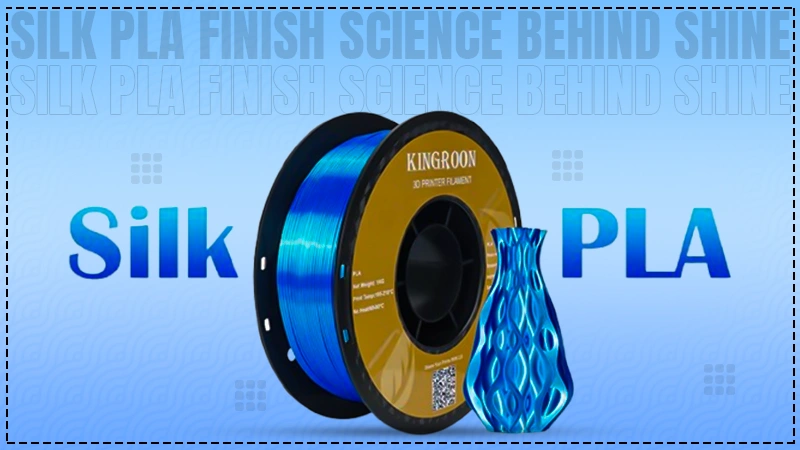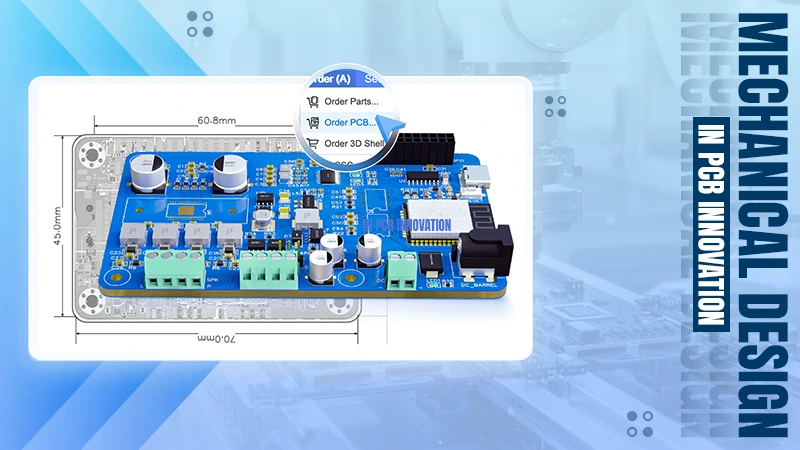How Silk PLA Achieves Its Finish: Science Behind the Shine

As the industry moves towards smarter solutions, gone are the days when you had to go above and beyond to produce a shinier finish in 3D printing. That’s because, with the introduction of the Silk PLA in the 3D printing world, we have made advancements like never before!
Also known as Polylactic Acid, the silk variant has become one of the most popular in the world of 3D printing. Why? With Silk PLA, creating glossier and shinier finishes has become quite easy.
The applications are limitless, from printing decorative items to figurines. But most people are still confused as to how exactly PLA achieves its shinier finish. To make things interesting, we will discuss all the aspects that affect Silk PLA’s prints.
Stay tuned and read till the end.
What is PLA and Its Different Variants
PLA is a biodegradable thermoplastic that can easily be obtained from different resources like sugarcane or cornstarch. For its renewable resources source, it is quite popular in the 3D printing industry.
The world is slowly moving toward everything green, and so are 3D printing materials. Moreover, for beginners, PLA and its variants are much easier to print because they are less technical and have fewer chances of getting issues like warping.
PLA filament is easier to use, flexible, and even contains high-strength options, but with the addition of Silk PLA, 3D printing enthusiasts are loving to create a shinier and glossier finish now. When different additives are used for their reflectivity, it enhances the finish.
Silk PLA is a specialized form of PLA that is used with different materials, including polymers and even chemical additives. What’s amazing about Silk PLA is that once you 3D print using this filament, your prints will be smooth and ultimately give you a vibe of polished metal.
While Silk PLA is popular and loved by many, how exactly is it made?
How is Silk PLA Made? – The Science Behind the Gloss
Contrary to its name, the Silk PLA is not made of actual silk. When we say the word “silk,” it only refers to the fact that this type of PLA filament gives a silky and smooth finish, but that doesn’t mean any kind of silk is involved in the equation.
So, what exactly is behind the formation of this filament? Firstly, we want to make it clear that the exact formulation of the Silk PLA filament varies from company to company, meaning that different manufacturers will have their own twists when making it.
But here are general guidelines on the materials used to create such a glossier and shinier finish.
- Additives: When you look at a Silk PLA print, what’s the first thing you get? Its reflectivity. Many times, companies use polymers or chemical agents to improve the light reflectivity of the Silk PLA. This can include special waxes or even aliphatic polyesters.
- Pigments and Colorants: Adding high-quality pigments allows manufacturers to enhance the overall reflectivity of PLA, creating more of a metallic finish.
- PLA: Of course, since Silk PLA is a form of PLA, we must use the base material, which would provide a structure for printing and manipulating 3D prints.
- Plasticizers: Filaments in 3D printing are known to have brittleness, and plasticizers are used to enhance their properties, give Silk PLA a smoother finish and get rid of brittleness and stiffness.
When all of these things are added to the regular PLA, it becomes Silk PLA,a nd that’s how you can create some of the most interesting 3D prints.
Surface Finish of Silk PLA
But now, you might be wondering how Silk PLA gets that reflective finish. To understand that, we must do a little science session. To achieve this awesome finish, Silk PLA works with two main principles: enhanced refractive properties and smooth surface microstructure.
Starting from the smooth surface microstructure, when Silk PLA gets extruded during the printing process, thanks to all the added materials, especially plasticizers, it flows much better than your regular PLA filament.
Hence, you get a smoother layer with a less rough surface, which is something all people who like to create a smoother finish want. Light scattering here is minimized, which gives Silk PLA a glossier appearance.
But what about its reflective finish? There, we have the enhanced refractive properties of Silk PLA because when we have polymers, we get an overall higher refractive index for the Silk PLA compared to the regular one.
In the end, we get an effect that is quite similar to polished metal, glassed, giving us that glossier and shinier look.
What can Silk PLA Print?
Now that you understand how exactly Silk PLA is made and achieves its shiny, glossier, and reflective finish, what exactly can you print with this type of PLA? Well, there’s a lot to cover. The most common use of Silk PLA is making prototypes.
Silk PLA filaments by Chitu Systems are some of the best for creating any type of shiny object, and if you’re interested in multi-color prints, then they have some of the widest collections of Silk PLA that you can choose from.
In general, the Silk PLA is perfect for creating things like figurines, jewelry, vases, and anything that comes in a glossier finish. There are many function objects being created using this filament that are often used in movies.
Final Verdict
Ultimately, the choice to print anything is only limited by our imagination. But if you’re looking to create some of the best 3D printing materials, you can check Chitu Systems, as they have a wide range of all things 3D printing in their store.












